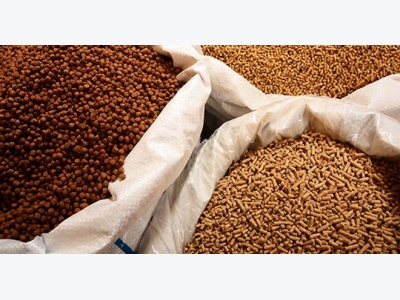High feed prices cut into animal husbandrys profits

Input material prices have decreased, but the price of animal feed remains unchanged, and, as a result, breeders have incurred heavy losses as the live pork price has dropped dramatically.
Nguyen Thi Dung in Vinh Huu commune of Tien Giang province complained that the live pork prices have dropped to VND25,000 per kilo, but merchants have only bought it in limited quantities.
She said she incurred a loss of VND1 million for every 100 kilo pig sold.
“The money I get from selling pigs is not enough to pay for feed,” she said. “Some years ago, when the pork price increased, the animal feed price also increased rapidly. Now, though the pork price decreases, the feed price stays unchanged.”
Farmers in Dong Nai province remember that the pork price began increasing in mid-2014. At that time, Emivest Vietnam raised the feed price by VND7,500 per 25-kilo bag of feed, or VND300 per kilo.
Since then, the pork and animal feed prices had been increasing until mid-2016. And so had the price of veterinary medicine.
However, though the pork prices have dropped dramatically, nothing has happened with animal feed.
Nguyen Tri Cong, chair of the Dong Nai Livestock Association, criticized animal feed manufacturers of ‘not sharing difficulties’ with breeders.
Meanwhile, Le Ba Lich, chair of the Vietnam Animal Feed Association, affirmed that the feed price decreased by 5-10 percent compared with earlier this year, hovering around VND8,100-9,000 per kilo.
However, Lich admitted that with the feed price, farmers would still take losses.
Farmers need four kilos of feed to create one kilo of live meat. With the pork selling price of VND25,000 per kilo, farmers now suffer loss of nearly VND10,000 per kilo of meat.
A MARD’s report showed that Vietnam imported $1 billion worth of animal feed in the first quarter of 2017, an increase of 42 percent of the last year’s same period.
The sharp increase in imports was attributed to the abundant supply and low prices, which prompted enterprises to increase imports for stockpile.
Besides, animal feed processing enterprises enjoy attractive tax incentives. Since 2014, the VAT on input materials to make feed has decreased from 5 percent to zero percent.
With the low import prices, the tax decrease and the unchanged selling prices of products, animal feed manufacturers now can enjoy fat profits.
The Vietnamese feed market is the 17th largest in the world and the third in the region, after Thailand and Indonesia.
However, 60-70 percent of the market share is being controlled by foreign invested enterprises. They are CP Vietnam which holds 20 percent of the market share, Cargill Vietnam (10 percent), Proconco, Green Feed and Anco (5-8 percent).
Có thể bạn quan tâm
 State Bank to aid pig farmers
State Bank to aid pig farmers The State Bank of Vietnam (SBV) issued an official document asking credit institutions to support borrowers in the livestock industry
 US fruit growers look for pitaya market to take off in 2017
US fruit growers look for pitaya market to take off in 2017 Exotic in looks and name, pitaya or strawberry pears, more commonly known as dragon fruit in Vietnam, are grown on trellising structures like those found
 Farm produce falls in price, farmers incur losses
Farm produce falls in price, farmers incur losses Pineapple, watermelon and chili growers are complaining about the hot weather which has forced them to work hard to water crops